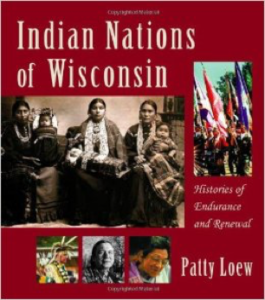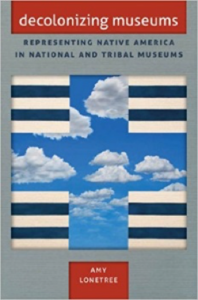A bout a year ago, someone who isn’t from Wisconsin asked me which tribes reside in my home state. I’m ashamed to say that the only answer I could give was the names of the casinos I was familiar with, such as Potawatomi and Ho-Chunk. That should not be my only encounter with the tribes of Wisconsin! Born and raised in Wisconsin, thinking about this question made me realize that I know so little history about the place I call home. Even though I studied history in undergrad, my understanding of Wisconsin’s tribal histories is limited to my fourth-grade lessons about the state.
bout a year ago, someone who isn’t from Wisconsin asked me which tribes reside in my home state. I’m ashamed to say that the only answer I could give was the names of the casinos I was familiar with, such as Potawatomi and Ho-Chunk. That should not be my only encounter with the tribes of Wisconsin! Born and raised in Wisconsin, thinking about this question made me realize that I know so little history about the place I call home. Even though I studied history in undergrad, my understanding of Wisconsin’s tribal histories is limited to my fourth-grade lessons about the state.
For this week’s TLAM reading, we read Patty Loew’s Indian Nations of Wisconsin: Histories of Endurance and Renewal. While reading, I found that I was familiar with the general stories of Jean Nicolet, French traders, and how native peoples were pushed further west to make room for white settlers. It was the more recent history of residential boarding schools, allotment, termination, and relocation that emphasized the giant gap in my education. Additionally, I was not aware of how several of the Wisconsin tribes were not even originally from the area, but rather were forced to leave their homes further east. As a history student, Loew’s book made me reconsider my education and understanding of my home.
Our class discussion about tribal histories in Wisconsin and the meaning of the term, “indigenous,” also made me reflect on my own beliefs and identity. So while it is worthy to understand Wisconsin’s tribal histories for their own sakes, I found that learning the history of other people groups also helps me to discern my own.
 Historically, cultural institutions such as libraries, archives, and museums have addressed North American Indigenous peoples through tales of Western exploration and settlement. Native people are cast as secondary characters in relation to the white “heroes”. In her book, Decolonizing Museums: Representing Native America in National and Tribal Museums, Amy Lonetree emphasizes that even when historians address the effects of American colonialism, they do so in a passive way so that no blame is attached to any party. Instead of avoiding the difficult facts of what occurred, Lonetree argues that museums (and other cultural institutions) need to discuss colonialism and its effects on Native peoples. Doing so will allow people to understand the present situation and help Native people reclaim their pasts. It is time to start privileging the voices and stories of American Indians.
Historically, cultural institutions such as libraries, archives, and museums have addressed North American Indigenous peoples through tales of Western exploration and settlement. Native people are cast as secondary characters in relation to the white “heroes”. In her book, Decolonizing Museums: Representing Native America in National and Tribal Museums, Amy Lonetree emphasizes that even when historians address the effects of American colonialism, they do so in a passive way so that no blame is attached to any party. Instead of avoiding the difficult facts of what occurred, Lonetree argues that museums (and other cultural institutions) need to discuss colonialism and its effects on Native peoples. Doing so will allow people to understand the present situation and help Native people reclaim their pasts. It is time to start privileging the voices and stories of American Indians.
-Kristin Arnold
